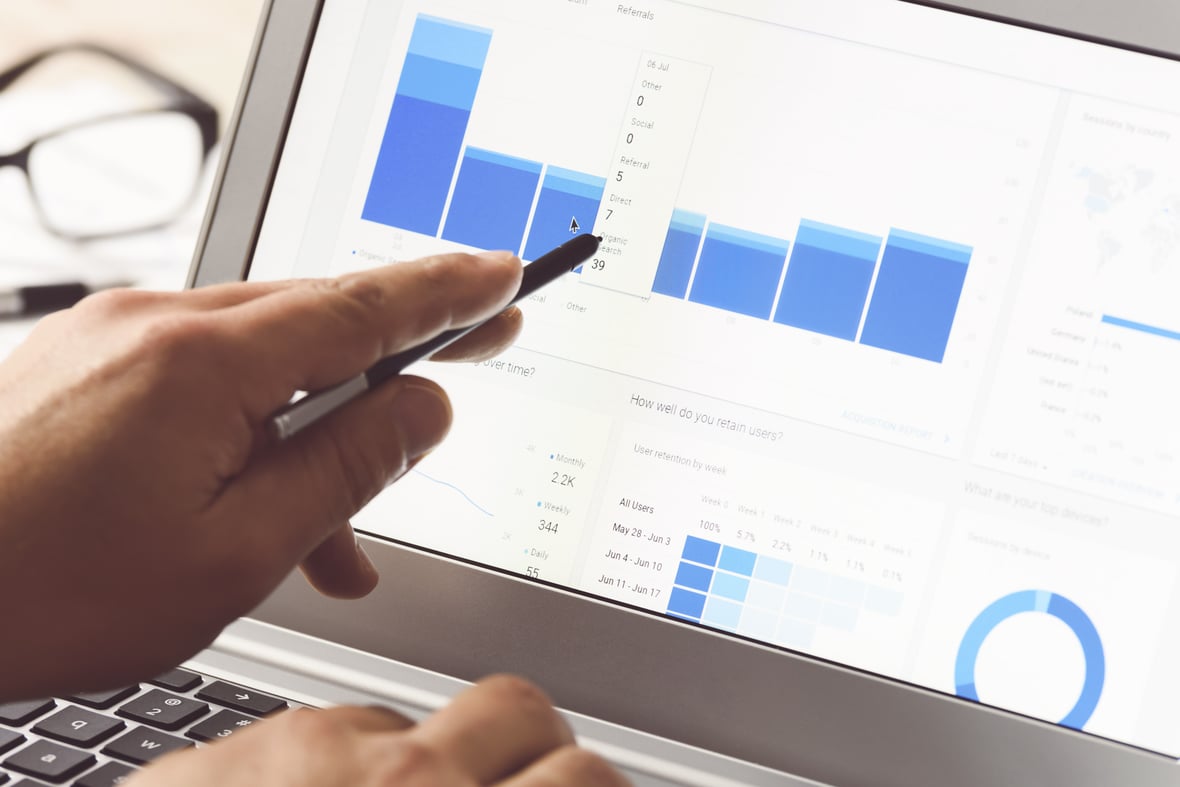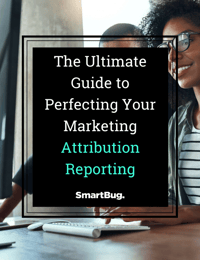
A Guide to Social and Paid Attribution Reports
November 30, 2020
By Emma Allen
Seeing the value of your marketing efforts, whether you’re the business owner or the marketer, is undoubtedly important in the constant conversation about return on investment (ROI). In 2020, it is more important than ever to have a clear understanding of how your portfolio of marketing efforts work together to increase conversions. To learn more about how to maximize your paid media strategy, see fellow SmartBug® Brittani Bloomberg’s article here.
With companies utilizing a large variety of advertising tactics in their digital marketing mix, how do you properly attribute conversions to the right sources? That’s right, sources. In our current digital space, we see multiple touchpoints within each Buyer’s Journey. This means, hypothetically, a user could see your Facebook ad, do research organically on Google to find out more about your offerings, and convert through one of your Google advertisements.
Understanding each marketing platform’s attribution reporting is key to achieving the fullest picture of which platforms are working for your business. To help you better comprehend the potential reach and complexity of attribution reporting, we’ve broken down three major paid media platforms and their attribution reports.
When we think of tracking conversion attribution through paid marketing efforts, Google Ads is usually top of mind. Google attribution is session-based (cookie-based) versus Facebook Ads, which is pixel-based (login-based). This is the reason why, by default, the two systems track conversions differently. Think of when you’ve looked into Google Analytics for source conversion metrics and the numbers don’t seem to add up—this is the major reason why.
When looking at your attribution report in Google Ads, there are six different models that can be used to provide insight into your customers’ interactions with your ads.
Last Click
This attribution model is popular among advertisers, because it provides the most credit to the last interaction that a customer had with one ad and its correlating keyword. However, this may not be the best option for your business due to the fact that it ignores all other interactions a customer may have had with ads.
First Click
Opposite of the last click model, this method gives credit to the first ad interaction and its corresponding keyword.
Time Decay
The time decay model gives more credit to the clicks that happen closer to the time of the conversion. If your company has a longer conversion period, this model may be useful.
Linear
This model gives credit to all interactions equally on the conversion path.
Position-Based
The position-based model distributes 40 percent of the credit to the first and last clicked ads. Any other clicks that happen between the first and the last click are given 20 percent credit. This is why you might see a campaign showing partial conversions.
Data-Driven
Finally, the data-driven model, which is only available to accounts with at least 15,000 ad interactions and at least 600 conversions within 30 days, uses actual account data to distribute credit. This model, along with time decay and position-based, is able to see if particular keywords, ad groups, or campaigns are contributing to revenue despite possibly not bringing in conversions.
Now that we’ve broken down the different attribution models that are used in Google, you can utilize the Attribution Model Comparison Tool in Google Analytics to compare one model to your existing model, to verify that you’re measuring your conversions properly.
Two other useful attribution reports to look at in Google Analytics are the Assisted Conversions report, which shows how many conversions in a time frame were attributed to and assisted by each channel you’re advertising through, and the Time Lag report, which shows how much time has passed between a user’s first exposure to your brand and their final conversion through your business.
YouTube
Recently, Google Ads brought YouTube into their attribution reporting and has made its data-driven attribution model available to advertisers. If Youtube attribution reporting is available to you, you will be able to see your YouTube clicks and engagements on videos in your attribution reports such as the Assisted Conversions report. This is extremely important to advertisers that utilize YouTube advertising alongside their search campaigns to see how users interact with both, and how they complement each other.
In comparison to Google, Facebook is reliant on a user being logged into their account in order to target them with advertising. While looking at your data for Facebook, keep in mind that these numbers are measured differently than the session-based tracking that Google uses.
Within the Facebook platform, you are able to select an attribution model and attribution window. Attribution models in Facebook determine how to credit an interaction for a conversion, whereas the attribution window has the advertiser specify which interaction they would like the model to consider.
Keep in mind, Facebook has a default of a last-touch attribution model with a one-day impression and 28-day click window. This means, for example, that you could have purchases as your conversion, and your reporting would show conversions attributed to Facebook where the last ad impression was within one day of the conversion or the last click on the ad happened within that 28-day window before the conversion.
With Facebook’s attribution, you are able to look at three different reports: Performance, Custom, and Cross-Device.
- Performance reports allow you to compare your ad’s impact across paid, organic, and direct interactions.
- Custom reports allow you to analyze your data in specific groupings.
- Cross-Device reporting allows you to see how users engaged with your business, as well as your paid media, across multiple devices.
A few years ago, LinkedIn ads integrated with Google Campaign Manager (formerly DoubleClick Campaign Manager, and apart from Google Ads). This allowed advertisers to see LinkedIn ad performance with other advertising spends, and it also allowed advertisers to see attribution for ads across all connected platforms.
While you will still be able to see your LinkedIn performance in the LinkedIn Campaign Manager, you will also be able to see this reporting alongside the other channels in the Google Campaign Manager.
Key Takeaways
Whether you’re the paid media advertiser or the business owner, it is vital that you understand paid media attribution and its reporting. Seeing value in your paid marketing efforts is so important and often not easy to attribute success to. When you utilize paid attribution reports and are able to show that these efforts work, it allows you to focus on the aspects of your business that matter the most.

About the author
Emma Allen was formerly a Paid Media Specialist at SmartBug Media. She has a background in PPC specifically, Google and Bing Ads. She has a passion for learning and the writing side of paid media. When she's not analyzing trends in paid media accounts, she can be found checking out local restaurants or listening to live music. Read more articles by Emma Allen.





















